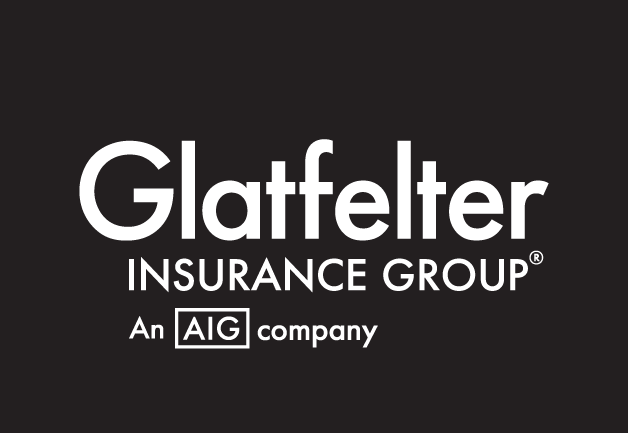Help protect your house of worship by following these key practices.
This year has forced many faith communities to redefine the worship experience. While some worship centers have resumed in-person services, many have not. Even if your church, mosque or synagogue remains closed, routine maintenance is crucial to helping provide a safe space for when your congregation does meet.
Regular upkeep can also help save money on repair costs and keep your facility standing for years to come. When budgets are already tight, cutting costs anywhere can be a blessing for houses of worship. According to Church Executive, preventative maintenance can help reduce the rate of building deterioration from 2-4% down to 1-2%. While that may seem small, repair costs add up. The Evangelical Christian Credit Union estimates that the average worship facility spends 82% of its annual budget on administration and maintenance costs.
Now is a great time to start or revamp your facility maintenance program. With fewer events and less foot traffic, your worship center can focus on building a program that is both comprehensive and doable. Here are some steps and tips to help you get started.
1. Assess the property
It’s important to establish a baseline. Completing a thorough property assessment will help show the current condition of your worship center and the surrounding grounds, as well as provide an accurate scope of the facility. Often, problems can occur because areas of a property are rarely visited, or items on the property are rarely used. Rather than wait for an incident to occur, it’s best to be aware of all aspects of the property.
As you complete a walkthrough of the property, take pictures of important features or valuable artifacts, even if they are already in great condition. Documenting how the property should look will be important when the time comes for repairs or if an insurance claim needs to be filed.
Speaking of insurance, this is also a great time to make sure that your coverage matches your needs. If possible, ask your agent to walk through the property with you; they’ll be able to identify items or scenarios that may need additional protection.
2. Get organized
Can you find the receipt for your last repair? When was the last time the smoke detectors were checked? If you can’t answer these questions, it’s time to get organized!
Having a designated place to store all the information regarding your facility’s maintenance – and a system to categorize it all – helps your organization run more efficiently and provides a record for future staff. Keeping receipts of repairs may seem a little overboard, but these can help you budget necessary costs more accurately, as well as provide the contractor’s information and details of the work done.
Calendars are also extremely helpful when it comes to organizing and performing maintenance. With today’s technology, you can set digital reminders for nearly any task – like changing those smoke detector batteries. There are even software programs and apps designed to help churches and other houses of worship schedule, perform and record maintenance work.
3. Train staff and volunteers on day-to-day maintenance
Facility maintenance isn’t just about big ticket items. It’s also about taking care of the property as its being used. This means cleaning before and after events and even small repairs. While it is cost-efficient to rely on in-house staff or volunteers to perform these daily tasks, it is important that all workers complete safety training. Be sure your maintenance team has been instructed on how to safely use any cleaning chemicals or power tools they may need to use while on duty. Ladder safety and safe lifting techniques should also be included in their training.
Property Maintenance Checklist for Worship Centers
Now that we’ve covered the groundwork for successfully maintaining your house of worship, let’s dive into what to look for when assessing the property. While your facility may not include all of these areas, the checklist below is a great starting point.
Roof
Check and assess your roof at least once a year and after every severe storm. Use this roof assessment form to help evaluate it for any damage. Also check for any signs of infestation, including bats. In addition, check gutters and drainage systems for clogs and wear. These should be cleaned yearly.
Bell towers, spires and other decorative architectural elements
If your house of worship has any specialty architectural elements, these need to be regularly assessed for damage along with your roof. Bells should be checked for cracks, loose bolts, worn ropes, etc. Pulley structures and clapper joints should be tested for stability as well.
Stone and masonry work, including exterior walls, need to be included in facility assessments and serviced by specialists.
Windows and doors
Periodically check insulation and weather stripping for any damage. For specialty panes, like stained glass, ensure that there is enough ventilation to prevent discoloration. Check locks and hinges to make sure that they function properly.
Utilities
Routinely check pipes for leaks or potential to freeze, especially in the colder months. Take care of dripping faucets right away, as they have the potential to indicate a larger problem.
Electrical systems should be tested and checked regularly and before installing new appliances or electrical equipment.
Emergency management systems
The United States Fire Administration recommends testing smoke detectors every month and changing batteries at least once a year. Carbon monoxide detectors should also be tested monthly, and replaced every 5-7 years. Sprinkler systems should be scheduled annually for service and maintenance.
Rooms
Assess each room in your house of worship, along with the furniture inside. Check pews for rough edges or other damage. Replace worn carpeting and ensure that walkways are clear of any tripping hazards.
Grounds
There are four areas of interest when it comes to the outside of your church, temple or mosque: landscaping, parking lot, walkways and playground. Check trees for broken or unstable branches. Check the flow of ground water to make sure pools are not forming. Survey the parking lot for pot holes, tripping hazards, etc. Keep walkways clear of debris and check handrails for stability. If your center has a playground, check the equipment regularly. You can use this playground inspection checklist to help evaluate your equipment.
Some view daily prayer as a way of upholding and restoring their faith. Similarly, regular upkeep and maintenance checks can help preserve and sustain your house of worship for generations to come.
Mary Carder, Integrated Marketing Specialist
DISCLAIMER
The information contained in this blog post is intended for educational purposes only and is not intended to replace expert advice in connection with the topics presented. Glatfelter specifically disclaims any liability for any act or omission by any person or entity in connection with the preparation, use or implementation of plans, principles, concepts or information contained in this publication.
Glatfelter does not make any representation or warranty, expressed or implied, with respect to the results obtained by the use, adherence or implementation of the material contained in this publication. The implementation of the plans, principles, concepts or materials contained in this publication is not a guarantee that you will achieve a certain desired result. It is strongly recommended that you consult with a professional advisor, architect or other expert prior to the implementation of plans, principles, concepts or materials contained in this publication.
Related posts
Many ministries spend countless hours planning the trip’s itinerary, fundraising, and preparing teams, but one critical area often overlooked is insurance.
About the top 4 insurance claims houses of worship experience.
Tips on how to make list of church inventory to help you if a claim occurs.











Submit a Comment